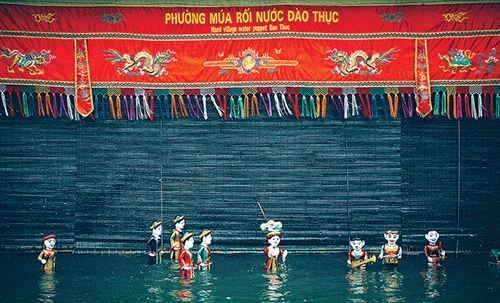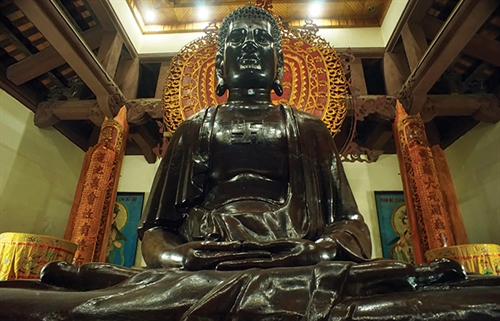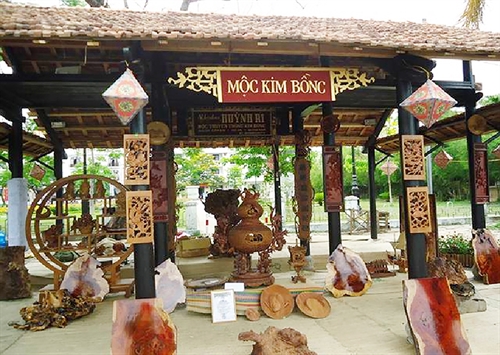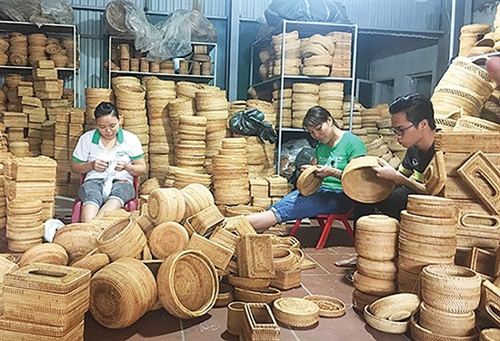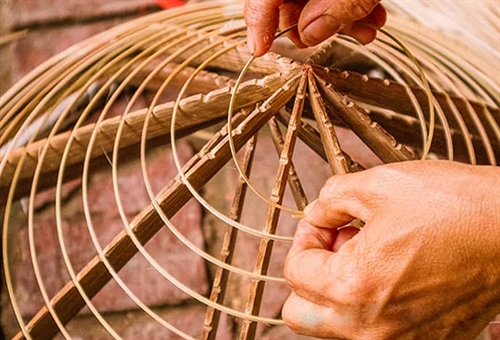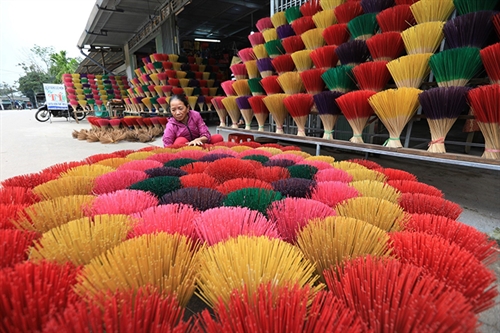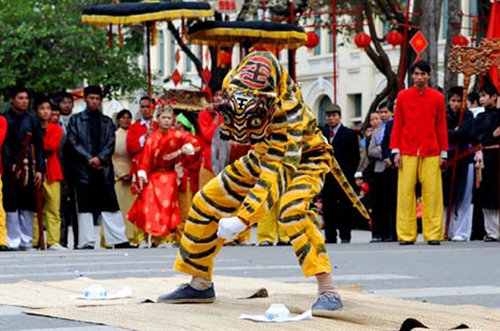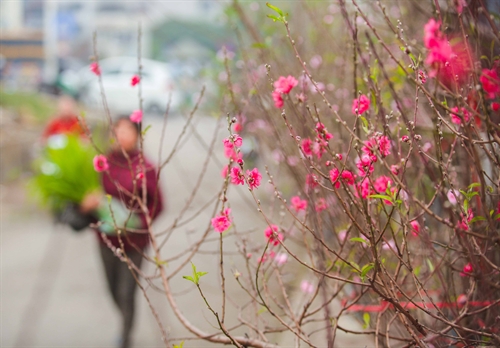As soon as a tourist enters Quat Dong traditional hand embroidery craft village in the same name commune or its surrounding areas in Thuong Tin district, he will find through windows and doors many people busily engaged indoors with hand embroidery.
Located in Quat Dong commune, about 25 kilometers south of Hanoi, Quat Dong traditional hand embroidery craft village is considered the birthplace of the age-old needle painting craft. The commune is famous for one-sided hand embroidered items portraying the country’s great personalities and beautiful landscape.
Historical documents show that the founder of Quat Dong and other embroidery craft villages in surrounding areas was Le Cong Hanh, who was born in 1606 in Quat Dong village, Thuong Phuc district, Son Nam region (now Quat Dong village, Thuong Tin district, Hanoi) under the name of Tran Quoc Khai. In 1646, he was sent by King Le Thai To as an envoy to China where he learnt embroidery and parasol making. When returning home, he handed down the crafts to people in not only his homeland but also the neighboring villages of Tam Xa, Vu Lang, Huong Duong and Huong Giai. Thanks to his contributions, the King granted the royal last name to Tran Quoc Khai and he then became Le Cong Hanh. After he passed away in 1661, needleworkers in the region built a temple called Ngu Xa (five villages) to worship him. Nowadays, on the death anniversary of Le Cong Hanh on the 12th of the sixth lunar month, embroiders in Thuong Tin district as well as all over the country hold an incense-offering ceremony to show their gratitude and respect to the founder of the hand embroidery craft.
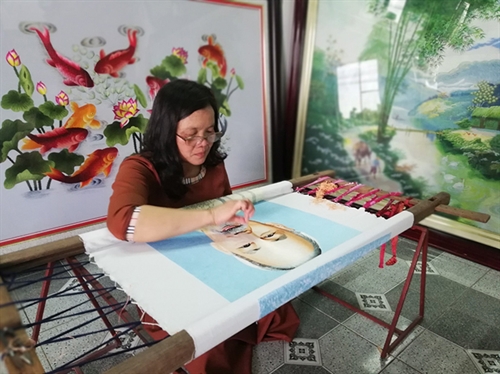 |
| Emeritus Artisan Hoang Thi Khuong is embroidering the portrait of President Ho Chi Minh__Photo: Hoang Thi Khuong |
In the early stages, Quat Dong village’s embroidery techniques were quite simple. Villagers often used naturally dyed color threads, usually yellow, red, mauve, green and blue, to embroider distiches or decorative patterns on parasols and altar canopies and curtains. As time went on, the embroidery craft continued to develop. In addition to ordinary colored threads, embroiderers then used metallic threads and applied more complicated techniques to create sophisticated embroidery patterns. Quat Dong villagers were chosen to embroider costumes for the Court and their products such as dragon, phoenix, and butterfly couple embroidery designs were popular among and loved by the noble class.
In the 18th century, the first generation of Quat Dong skilled needleworkers flocked to the imperial citadel of Thang Long (now Hanoi). At first, they opened shops in Tu Thap village (a location at the end of Hang Trong street) to sell their hand embroidered items. The area became more and more crowded and then was called Hang Theu (embroiders’ guild). Quat Dong embroidery pieces were also sold in surrounding streets, including Hang Non, Hang Manh and Hang Chi. In addition to selling finished products, Quat Dong embroiderers also handed down the craft to many people, not only Thang Long residents but also immigrants from other localities.
President of the Hanoi Embroiderers Association Ta Van So told the Vietnam Law & Legal Forum magazine that under the French colonialism, a lot of the village’s embroidery products, including embroidered sheets, pillows and tablecloths, were brought to France. Quat Dong hand embroidery craft blossomed during 1972-86. With the State’s investment, embroidery classes were organized with teachers being skillful artisans and the craft then spread to neighboring villages. At that time, there was even a state-run company specialized in exporting Quat Dong’s embroidered pieces, ranging from napkins, tablecloths, sheets and pillows to embroidered pictures to foreign countries. Today, the craft is continued to be passed down to younger generations.
According to Emeritus Artisan Hoang Thi Khuong, who is the owner of an embroidery workshop for people with disabilities in Quat Dong village, children in her village are taught how to hold a needle when they are seven or eight years old. They will, first all of, have to get familiar with basic embroidery stiches like stem stich, long and short stich, satin stich, French knot, running stich, back stich and chain stich, etc., and simple patterns such as small flowers and leaves, before starting to learn more complicated ones.
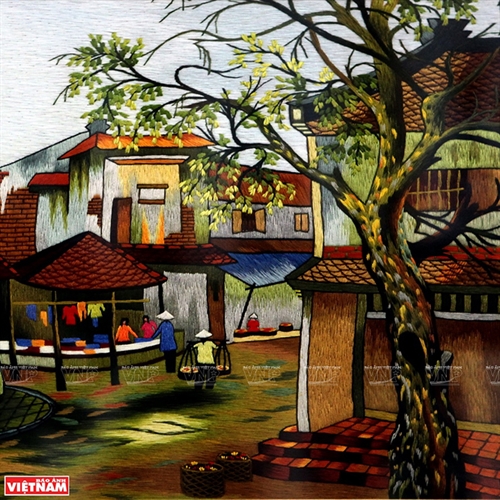 |
| A countryside embroidery work of Quat Dong village__Photo: https://vietnam.vnanet.vn |
Quat Dong embroidery can be classified into three types: still-life embroidery, portrait embroidery, and royal costume embroidery. Of them, portrait embroidery is considered most difficult as it requires embroiderers to express not only the appearance but also the soul and spirit of the characters. As for still-life embroidery, embroiderers are free to create their own works but must try their best to choose threads of the most appropriate types and shades to add depth and dimension to the embroidered pictures. Meanwhile, royal costume embroidery and embellishment must follow strict principles so as to show exactly the rank and position of the wearers, for example, the king’s robes should always be in yellow and embroidered with dragons and the Chinese character “Shou” or “Fu”, which means longevity or good fortune, circled by cloud design patterns.
Today, apart from age-old embroidery techniques, Quat Dong artisans also apply more complicated ones such as double-sided embroidery. It is not an exaggeration to say that when looking at two-faced embroidery paintings, no one can find out where the startpoint and the endpoint are because all thread knots are completely hidden. Because of its complexity, only skillful artisans can master this technique and double-faced embroidery paintings are considered valuable fine handicraft works.-
